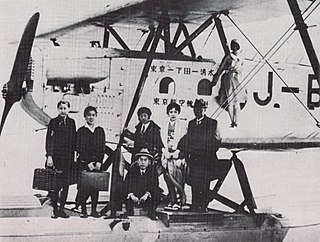
The Aichi AB-1 was a result of a 1926 government call for a small, Japanese-built, civil transport biplane able to operate from land or water. It won the contest in both roles, but did not reach production as airlines moved from biplanes to monoplanes. Nonetheless, it remained in commercial use well into the 1930s.

The Potez 37 was a two-seat, long range reconnaissance aircraft built to compete for a French government contract. It flew in mid-1930 but did not win the competition, so only two were completed.
The Potez 27 was a French reconnaissance biplane first flown in 1924. 175 were operated by the Polish Air Force, most built in Poland by PWS under licence. Others went to Romania, where they were also used as light bombers.

The Caudron C.68 was a two-seat French training and touring aircraft, built in the early 1920s, which attracted interest at the time because of its simple and fast wing folding arrangement. Only a few were produced.

The Caudron C.67 was a simple single seat biplane with a low powered engine. It was built and flown in France in 1922.
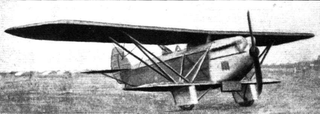
The Descamps 17 A.2 was a two-seat reconnaissance fighter built under a French government programme of 1923. Two versions, with different engines, were tested and six examples were built under licence by Caudron as the Caudron C.17 A.2.

The Les Mureaux 3 C.2 and Les Mureaux 4 C.2 were French two seat, parasol winged fighters, flown in 1927-8, which differed only in their engines. They were developed into near identical army co-operation types, the ANF Les Mureaux 130 A.2 and ANF Les Mureaux 131 A.2, in 1929–31.
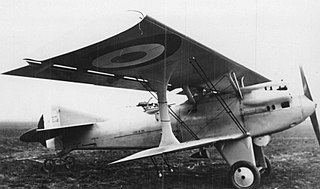
The Villiers XXIV or Villiers 24 CAN2 was a French army night fighter most notable as the first French military aircraft to be fitted with leading edge slats.

The Heinkel HD 20 was a twin engine, three seat German biplane built in 1926 for civil survey work.
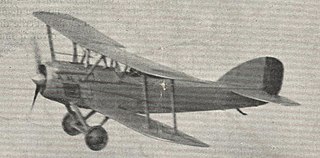
The Astra-Protopopescu or Astra-Proto was a Romanian reconnaissance aircraft flown and tested in 1925.
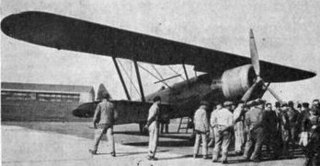
The Potez 50 or Potez 50 A2 was a French two seat military multi-role aircraft, first flown in 1931. It did not go into service but seven variants using five different engines were produced, one of them setting several speed with useful load records and another, the Potez 506, setting three altitude world records.

The Wibault 260 R.2 was a contender for a French government contract for a long range, two seat reconnaissance aircraft, issued in 1928. There were eight prototypes in the 1931-2 contest and the Wibault was not selected for production.
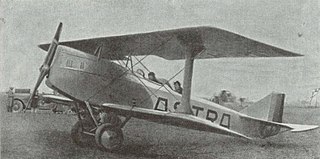
The Astra-Șeșefschi was a two-seat Romanian reconnaissance aircraft designed and built in 1923.
The Potez 24 A.2 was a mid-1920s French biplane intended to replace the Potez 15 as an army observation aircraft. The further improved and larger Potez 25 was preferred for production.
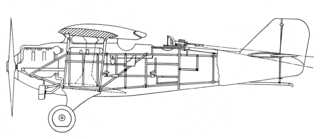
The Bréguet 25 or XXV was a French two seat fighter from 1925. It was heavily armed, carrying seven machine guns.

The Magni PM.2 Vittoria was an Italian experimental, single seat, parasol wing aircraft built in the mid-1920s. It had a large area aerofoil on each of its single wing bracing struts which could be rotated together or independently to give lift or drag.
The CPA 1 was a French twin-engined, parasol-winged bomber designed and built in the mid-1920s.

The Aerial Engineering Corporation Standard 6W-3 was a commercial transport modification of the US Standard J-1 biplane military trainer aircraft, with new wings, engine and accommodation for four passengers. First flown in 1925, it was built in small numbers.
The Bulté RB.1 was a Belgian training and touring biplane first flown in 1928. Five examples flew with clubs and with private owners in contests and rallies.
The Borel C.A.P. 2, later SGCIM C.A.P. 2, was a prototype, all-metal framed, high-altitude sesquiplane fighter and reconnaissance aircraft with a supercharged engine, built in France around 1920. It was displayed, uncovered, at the 1922 Paris Salon.
















